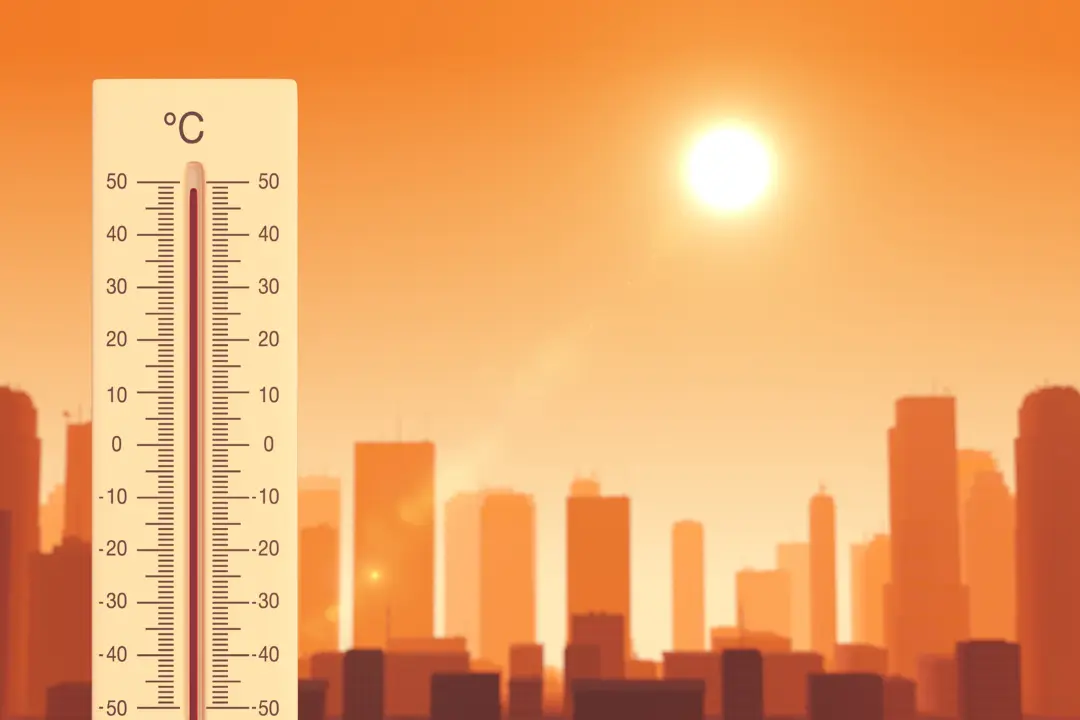Team AI4Water
As the world faces an escalating climate crisis, urban areas are at the forefront of this challenge. Cities, home to over half of the global population, are particularly vulnerable to the impacts of climate change, including rising temperatures, flooding, and more frequent extreme weather events. These changes are not just environmental—they’re also deeply social and economic. As urban areas continue to grow, the importance of incorporating climate change risks into urban planning has never been more critical.
The Growing Impact of Climate Change on Cities
Urban areas are often densely populated, with infrastructure like roads, buildings, and utilities built to last for decades. However, this infrastructure wasn’t designed to withstand the extreme weather events that are becoming more common due to climate change. Rising sea levels, intense heatwaves, flooding, and stronger storms all pose serious risks to cities, threatening both public health and the economy. For instance:
• Flooding: Coastal cities are particularly at risk from sea-level rise, and inland cities are increasingly susceptible to flash floods due to intense rainfall.
• Heatwaves: Urban “heat islands”—areas where urban development traps heat—are becoming more common, putting vulnerable populations such as the elderly and children at risk of heat-related illnesses.
• Storms and Hurricanes: Stronger and more frequent storms, like hurricanes, can devastate infrastructure and disrupt urban economies.
These changes aren’t just theoretical; they’re happening right now. The impacts of climate change are already being felt globally, with urban areas bearing the brunt. For cities to thrive and remain livable, urban planners must address these risks head-on.
Why Urban Planning Must Prioritize Climate Change Risks
1. Resilience to Extreme Weather Events
Urban areas need to be designed to withstand the growing frequency and intensity of extreme weather. This includes building infrastructure that can endure storms and floods, as well as creating green spaces and permeable surfaces to absorb excess water. For instance, stormwater management systems, such as retention ponds or green roofs, can help mitigate the impacts of heavy rainfall.
Integrating climate-resilient architecture and urban heat management strategies, such as reflective surfaces and green infrastructure, will help cities adapt to hotter temperatures, while flood-resistant designs can protect homes and businesses from rising waters.
2. Sustainable and Efficient Resource Management
Climate change is affecting key resources such as water, energy, and food. Urban areas must plan for sustainable resource use by prioritizing energy efficiency, water conservation, and local food systems. Urban planners can design cities that reduce energy consumption through better insulation, green energy sources, and the promotion of sustainable transportation options, like cycling and electric public transit.
Water conservation and management is also critical, especially in areas where climate change is causing droughts or altering rainfall patterns. Smart water management systems, wastewater reuse, and water-efficient urban agriculture are some solutions that can help cities manage their water resources more effectively.
3. Equity and Social Justice
Climate change disproportionately impacts marginalized communities, often exacerbating existing inequalities. For instance, low-income neighborhoods are more likely to be located in flood-prone areas or lack access to cooling systems during heatwaves. Climate-sensitive urban planning helps address these disparities by ensuring that all residents have access to climate-resilient infrastructure, affordable housing, and equitable access to green spaces.
Urban planners can prioritize the needs of vulnerable populations by creating affordable housing in safe areas, improving public health facilities, and ensuring equitable access to essential services, such as transportation and emergency relief systems during a climate crisis.
4. Mitigation of Future Risks
Urban areas are also major contributors to greenhouse gas emissions, mainly due to transportation, energy use, and waste. Mitigation strategies in urban planning can reduce emissions and minimize the impact of climate change. Cities can incorporate energy-efficient buildings, renewable energy sources, and low-carbon transportation infrastructure to reduce their carbon footprint.
Additionally, urban planners can promote policies that support carbon sequestration, such as increasing urban tree canopies and supporting green spaces that absorb carbon dioxide.
Strategies for Incorporating Climate Change Risks into Urban Planning
1. Climate Risk Assessments: Cities must conduct thorough risk assessments to understand how climate change will impact their unique geography, infrastructure, and population. This includes evaluating flood risk zones, heat islands, and vulnerable populations.
2. Integrated Planning: Urban planning should integrate climate change adaptation and mitigation strategies into every aspect of city design, from zoning regulations to transportation planning and waste management.
3. Building Codes and Regulations: Updating building codes to ensure that new constructions are resilient to extreme weather events and energy-efficient is essential. For example, buildings in flood-prone areas can be elevated, and all new developments should adhere to stringent environmental standards.
4. Public Engagement and Awareness: Successful urban planning also involves the community. Engaging residents in planning decisions ensures that their needs are met, particularly for vulnerable groups. Community-driven climate solutions, such as the installation of urban green spaces or community gardens, can foster both resilience and social cohesion.
5. Green Infrastructure: Incorporating green infrastructure, such as parks, green roofs, and tree-lined streets, can help cities manage stormwater, reduce heat, and improve air quality. These solutions not only provide environmental benefits but also enhance the overall quality of life for urban residents.
6. Collaboration and Innovation: Urban planning for climate change should involve collaboration between governments, businesses, and scientists. Innovations in climate resilience, sustainable technologies, and urban design can help cities become models of sustainability.
Conclusion
The urgency of climate change demands that urban planners act now to create cities that are both resilient and sustainable. As the world continues to urbanize, integrating climate change risks into urban planning will not only protect infrastructure and reduce vulnerabilities but also improve quality of life, ensure social equity, and help mitigate future climate-related challenges.
By prioritizing climate resilience, sustainable resource management, and social justice, urban planners can pave the way for cities that thrive in the face of climate change—ensuring a safer, more sustainable future for everyone.



